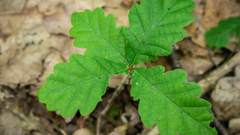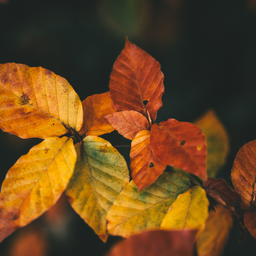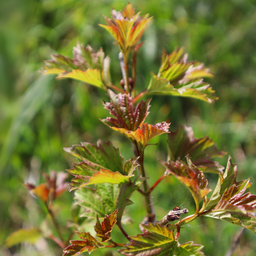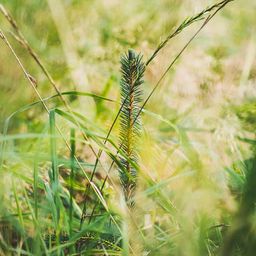Jun 21, 2021
10 ways to reduce your climate impact – how you can make a difference!
The best way to improve your climate impact is to reduce your emissions. But where to start? Try our 10 practical tips that make a real difference.

Sure, it’s great to make changes that reduce your carbon footprint. But to really improve the impact you have on the climate, you need to focus on reducing your carbon emissions. That’s the place to start and here’s how you can do it.
1. Choose climate-friendly daily transport
Those daily trips to work, school or college that we make over and over again? Well, they really add up if you take them by car. Of course, it depends on how far you have to travel and what you can afford, but for many people these frequent journeys are a fantastic place to significantly reduce your emissions.
Here are some changes you can make:
- Use public transport or ride a bicycle
- Walk shorter distances if you can
- Share a car if you really have to drive
- Choose an electric or modern car with low fuel consumption
2. Go on more sustainable holidays
Planes are one of the biggest climate culprits and many of us fly when we go on holiday. But can you travel a little closer to home next time? And do you really need to travel by plane? Trains are a more climate-friendly option and you get to experience the magic of each place you pass as you gaze through the window.
Ever wondered about the carbon footprint of your holidays? You can now try our calculators to work your CO2 emissions.
Calculate plane emissions
Calculate car emissions
Calculate train emissions
3. Switch to renewable energy in the home
You have more choice than ever when it comes to energy providers. Make sure you do your research to find out which providers use renewable energy and what climate commitments they have made. You can look up the information online or pick up the phone and ask them directly.
You can also look to install a modern, more climate-friendly heating system at home. And if you are able, you can even go further and install solar panels.
Some next steps you can take:
- Learn about different energy sources, such as coal, nuclear power, hydropower and wind power
- Search online to see which energy sources different energy providers use
4. Turn off the electronics and skip standby mode
Using renewable energy is great, but you can reduce your consumption too. Many of us leave our everyday electronic devices – phones, tablets and laptops – either connected or in standby mode. Do you really need to?
Sure, if it’s just you who turns lights off and powers down the tech, that’s not going to have much of an impact. But if we all changed our habits, it could make a much bigger difference. These are emissions we can collectively reduce.
Some next steps for you:
- Go through your electronic devices and list those you leave on or in standby mode when you don’t need to
- Start turning those devices off – leave notes and reminders to help you remember
5. Choose better foods and avoid food waste
The food you eat is a large part of your household’s climate impact. Meat and dairy production generates huge carbon emissions and products are shipped and flown all over the world every day. Eating seasonal, locally-produced food reduces your emissions, as does choosing plant-based alternatives to meat.
It’s not just production though – food waste is also a major source of emissions. In the UK, 6.7 million tonnes of food is wasted every year – a huge figure that means there are opportunities for change.
Some things you can do to help:
- Throw less food away
- Plan your meals to make sure all your food gets used
- Try the BBC’s climate change food calculator
6. Buy used instead of new
Brands, brands, brands. Everywhere we look there is another ad encouraging us to buy the latest, shiniest new thing on the market. But buying new means more waste and extra emissions created by the manufacturing process and transporting those products around the world.
So why not use what you’ve got for a little bit longer or buy second-hand instead? It can make a difference to your emissions and will likely cost you less too. Double win.
Some tips for not buying new:
- Search online for stores and marketplaces that sell second-hand products
- Record how much money you save by buying second-hand
- Got children? Find second-hand clothes that have hardly been worn
- Borrow books from the library instead of buying new copies
7. Use less plastic and reuse it when you can
Plastic is a major global environmental problem. The world’s oceans are full of the stuff, but even on dry land, plastic causes big problems. That’s because a lot of the plastic waste we put in the bin gets incinerated, which leads to yet more carbon emissions. There’s the manufacturing process too, which sees vast quantities of greenhouse gases pumped into the atmosphere.
Here are some ideas for reducing your plastic waste:
- Choose non-plastic bags made from recyclable materials
- Reuse the plastic you already have, such as plastic shopping bags
- Take your own drinks bottle out with you instead of buying new
- Avoid straws, plastic cups and plastic cutlery
- Help clean up your local area by finding and binning plastic litter
8. Choose local and organic
By choosing local products, you support local companies and help reduce transport-related emissions. And if you can also choose organic food, that’s even better because it means no chemical pesticides or imports.
Some tips for going local:
- Search online for places where you can find local and organic products
- Ask shops and producers what they mean by ‘locally grown’ and ‘locally produced’ – it’s good to question and be critical
- Share and promote good places to go local with your friends and family – see if you can inspire them
9. Improve your knowledge
The more you know about climate change, the more you understand what you and others can do about it. Find reliable sources of information to improve your knowledge and discover ways that you can change your behaviour. You’ll also be in a better position to help friends and family do the same.
We have lots of great information about climate change at EcoTree:
- What is biodiversity and why is it important?
- Understanding and Addressing Eco-Anxiety
- How climate change impacts our food resources
10. Take care of the forests
Trees are our thing here at EcoTree. Forests are the world’s second-largest carbon sink behind the oceans, but more and more are disappearing due to building developments, unsustainable forestry, and natural disasters.
We’re taking action. When you buy a tree with us, you help nurture forests and preserve their incredible biodiversity. And after many years, when your tree is felled for sustainable timber, we pay you back its value at the time. And for every tree felled, we plant three new ones.
There are three ways you can care for the forests through EcoTree:
Companies have the greatest impact on our climate
We’ve looked at what each of us individually can do to reduce our climate impact. But it's important to remember – companies leave the biggest carbon footprint. The Carbon Majors Report shows that 100 companies account for 71% of carbon dioxide emissions since 1988.
Reducing your emissions is great, but companies must do the same and go further. If we are to put the brakes on climate change together, both individuals and companies need to take steps to reduce carbon emissions.















